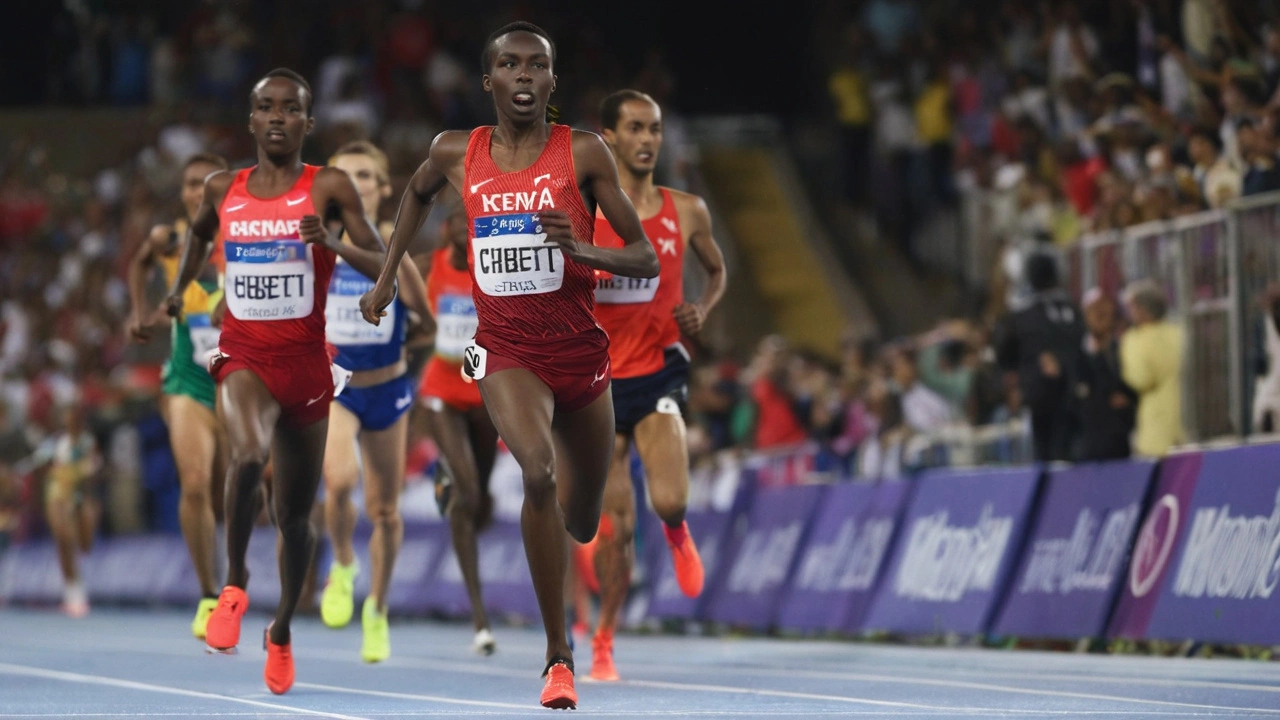
Margaret Kipkemboi Chebet's Bid for Second Gold at Paris 2024
Margaret Kipkemboi Chebet’s quest for a second gold medal at the Paris 2024 Olympics is set to be one of the highlights of the athletic events. Chebet, who clinched gold in the 5000 meters, now aims to extend her dominance in the stern 10000 meters race. The 10000 meters final promises to be a fierce contest, bringing together a lineup of the world’s most exceptional long-distance runners. The stakes are incredibly high as every contender is determined to leave an indelible mark.
After her stellar performance in the 5000 meters, Chebet’s training and mental discipline are more rigorous than ever. She has spent countless hours in intensive training sessions, refining her strategy to withstand the gruelling demands of the 10000 meters. Chebet’s preparations include a mix of endurance training, speed work, and mental conditioning to ensure she is at the peak of her abilities for the high-stakes showdown. She has shown a remarkable ability to adapt and fine-tune her techniques, which could prove pivotal in navigating the challenges the race will undoubtedly present.
Preparation and Strategy
The preparations for such an elite race involve more than just physical training. Chebet has worked closely with her coaching team to develop a solid race strategy. This includes pacing herself effectively throughout the race to conserve energy and execute a strong finish. Understanding her competitors' tactics and strengths will also be crucial for Chebet to position herself strategically during different phases of the race. Her coaches have emphasized the importance of staying mentally strong and focused, especially during the most demanding segments of the race.
As Chebet gets ready to compete on the grandest stage, she is highly aware of her formidable rivals. The name of Sifan Hassan from the Netherlands instantly rings a bell. Hassan is renowned for her astonishing versatility across various distances, making her a potent threat in the 10000 meters event. Her exceptional finishing speed and tactical acumen are attributes that Chebet must be prepared to counter.
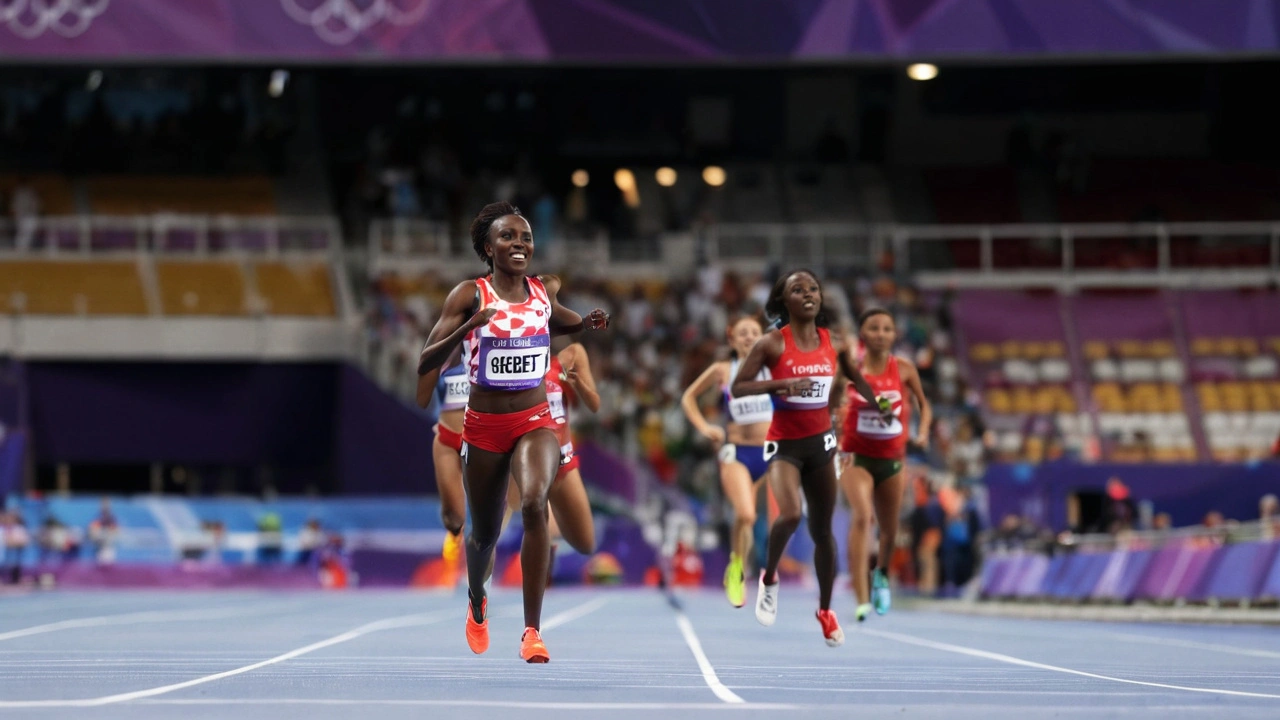
Key Competitors
Letesenbet Gidey from Ethiopia adds another layer of intense competition. Known for her world record in the 10000 meters, Gidey's endurance and speed make her a formidable adversary. Gidey’s ability to maintain a blistering pace throughout the race poses a significant challenge, requiring strategy and stamina from Chebet.
These two athletes, among others, ensure that the 10000 meters final is anything but a foregone conclusion. The field is loaded with talent and experience, with each runner bringing their unique blend of skills to the track. For Chebet, the race will be an intricate dance of tactics, speed, and endurance amidst a tightly packed group of elite runners.
The Thrill of the Competition
The women's 10000 meters final at the Paris 2024 Olympics is offering spectators an intense excitement. Each athlete is likely to push her limits, driven by the glory of Olympic gold. The potential for new records to be set makes the race even more exhilarating as runners give their utmost effort to triumph on one of the most prestigious sports stages.
Margaret Kipkemboi Chebet’s journey to the Paris 2024 Olympics has been marked with perseverance and excellence. Her previous accomplishments have paved the way for this moment, but the 10000 meters final is a fresh battlefield. Each stride on the track is an opportunity to etch her name further into the annals of Olympic history. The outcome of this race will be significant not only for Chebet but for the world of athletics as it will showcase the epitome of human endurance and competitive spirit.
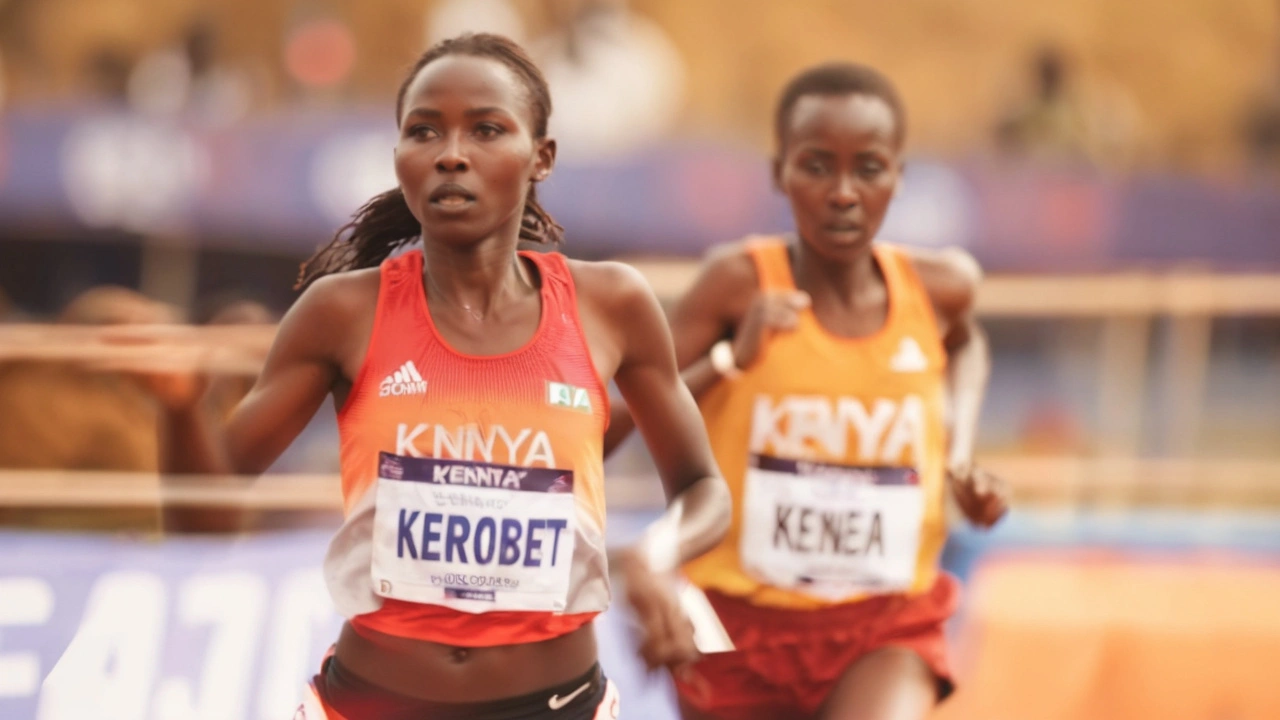
The Significance of the Event
A win in the 10000 meters would cement Chebet's legacy and solidify her place among the elite. This race is not just a test of physical prowess but also a testament to her resilience, dedication, and strategic acumen.
For Chebet, the Paris 2024 Olympics is a platform to inspire a new generation of athletes. Her journey, marked by determination and discipline, serves as a model for aspiring runners worldwide. As she prepares to face the elite competitors, she embodies the spirit of athleticism and the relentless pursuit of excellence.
The women’s 10000 meters final is more than just a race; it is a story of ambition, rivalry, and the human quest for greatness. As Margaret Kipkemboi Chebet steps onto the track, she carries with her the hopes and aspirations of many. The world's eyes will be on this momentous event, eagerly anticipating the performance of athletes who have dedicated their lives to the pursuit of Olympic glory. The race will undoubtedly be a remarkable spectacle, showcasing the very best of what the sporting world has to offer.
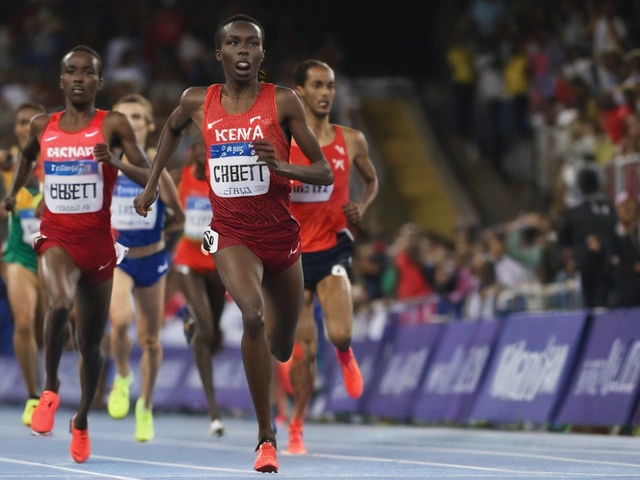

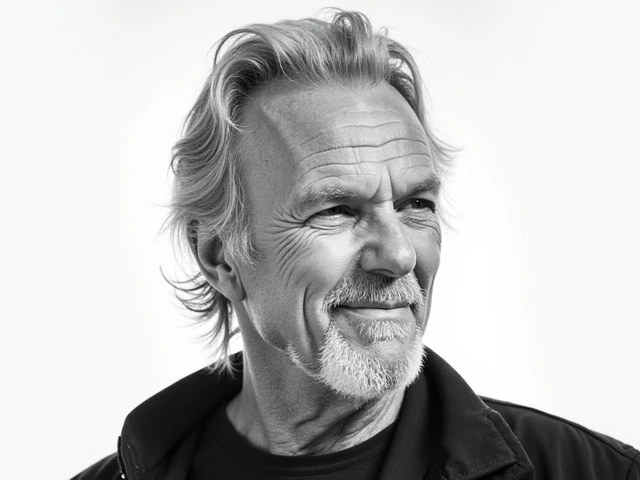
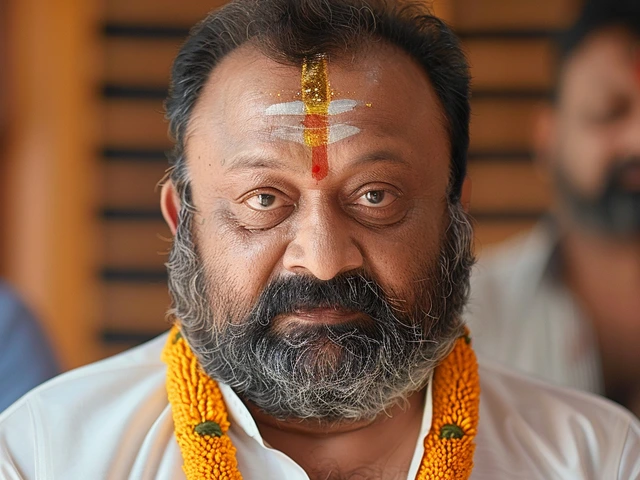


Chebet’s double‑gold chase is looking solid, especially after that clutch 5000m win. The 10k will test her stamina, but she’s clearly in the right headspace.
The narrative surrounding Margaret Kipkemboi Chebet is nothing short of cinematic, a saga that intertwines relentless grit with the luminous promise of Olympic destiny. From the moment she sliced through the finish line in the 5000 meters, the world has been holding its collective breath, anticipating the next chapter. Her preparation regime reads like a masterclass in periodization: high‑altitude blocks, meticulously calibrated interval sessions, and mental conditioning drills that would make a Navy SEAL sweat. Chebet’s coaching cadre has emphasized the art of negative splits, a strategy that demands an early conservative pace followed by a powerful, calculated surge in the latter stages. This tactical nuance is crucial when she faces the ferocious sprint finish that athletes like Sifan Hassan are famed for. Moreover, her biomechanical efficiency-characterized by an optimal stride length and a remarkably low ground contact time-provides a physiological edge in a race that can stretch beyond thirty minutes. She has also embraced cutting‑edge nutrition protocols, integrating periodized carbohydrate loading and micronutrient optimization to sustain energy reserves. The psychological dimension cannot be overstated; visualization techniques and controlled breathing exercises form the backbone of her mental resilience. As the Paris climate promises warm but manageable temperatures, hydration strategies become another battlefield. The Kenyan federation’s support infrastructure, featuring sports scientists and physiotherapists, adds layers of depth to her preparation. In juxtaposition, her rivals-Letesenbet Gidey’s world‑record pace and Hassan’s versatile speed-present a multifaceted challenge that demands adaptability. Chebet’s ability to read race dynamics in real time, adjusting her pace on the fly, may well be the decisive factor. The spectators, too, play a subtle role, their roaring encouragement serving as a psychological catalyst. Ultimately, whether she clinches that coveted second gold will hinge on the seamless integration of all these elements, a symphony of preparation, strategy, and indomitable will. Regardless of the outcome, her journey epitomizes the very essence of Olympic spirit, inspiring countless aspiring athletes across the globe.
Chebet’s training looks overly intense; she might burn out before the finish.
Let’s be clear-this whole “intense preparation” hype is a propaganda tool!!! The global elite athletes are just pawns in a grand spectacle designed by the IOC to push a narrative of endless competition!!! Anyone who doubts their own national runners is simply blind to the hidden agenda!!!
The 10,000 meters serves as a metaphysical arena where endurance meets existential purpose, a dialogue between flesh and the infinite. Chebet’s pursuit thus echoes the human quest for meaning beyond the stopwatch.
Indeed, the athlete’s physiological preparedness, coupled with strategic pacing, underscores the potential for a successful double‑gold performance. An empirical analysis of her lap splits further validates this assessment.
While the enthusiasm is commendable, the assertions lack substantive evidence and employ hyperbolic punctuation that detracts from constructive discourse.
The air in Paris feels charged with the electric hum of destiny, as if the very stadium walls are whispering Chebet’s name. Each stride she takes is a brushstroke on the canvas of Olympic legend, painting a saga that will be recounted for generations. Critics may mutter about fatigue, yet the narrative of resilience refuses to be silenced. Her heartbeat syncs with the drum of the crowd, a rhythmic pledge to triumph. Even the wind seems to bend in reverence, offering a fleeting ally to the determined champion. In this crucible of speed and stamina, the line between victory and defeat blurs into a shimmering possibility. The tension mounts, a crescendo that could erupt into a historic climax. Should she seize the moment, the tale will transcend sport, becoming a testament to human perseverance.
Chebet’s game plan is a kaleidoscope of speed bursts, steady cruising, and smart drafting-pure magic on the track.
Your vivid depiction captures the essence of Chebet’s journey, reminding us that athletic triumph is as much about narrative as it is about numbers.
The philosophical framing aligns with the viewer’s experience, transforming a race into a reflective meditation on perseverance.
Margaret Kipkemboi Chebet’s preparation appears methodologically robust, yet one must scrutinize the variance in her VO₂ max metrics relative to her competitors. Such an analytical lens reveals nuanced disparities that merit further investigation.